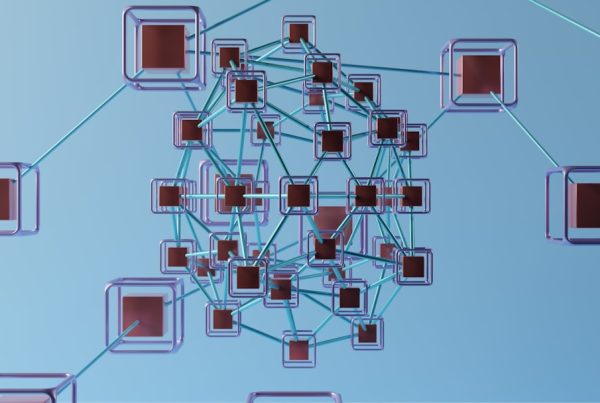In the digital age, where communication and transactions occur at lightning speed, the threat of IP phishing attacks looms large. These attacks are a form of cybercrime where malicious actors attempt to deceive you into revealing sensitive information, such as your IP address, passwords, or financial details. Unlike traditional phishing, which often relies on email or fake websites, IP phishing specifically targets your internet protocol address.
By exploiting vulnerabilities in your network, attackers can gain unauthorized access to your devices and data. You might wonder how these attacks are executed. Typically, they involve a combination of social engineering and technical manipulation.
For instance, an attacker may send you a seemingly legitimate message that prompts you to click on a link or download an attachment. Once you do, they can capture your IP address and use it to infiltrate your network. Understanding the mechanics of these attacks is crucial for safeguarding your personal and professional information.
By being aware of the tactics employed by cybercriminals, you can better prepare yourself to recognize and thwart their efforts.
Key Takeaways
- IP phishing attacks involve the use of deceptive tactics to obtain sensitive information such as usernames, passwords, and financial data by impersonating a trustworthy entity.
- Signs of IP phishing include suspicious emails or messages requesting personal information, unfamiliar login attempts, and unexpected changes to account settings.
- Protect your IP address by using strong and unique passwords, enabling firewalls, and being cautious about sharing personal information online.
- VPNs provide an extra layer of security by encrypting internet traffic and masking your IP address, making it harder for attackers to intercept your data.
- Implement two-factor authentication to add an extra step of verification when logging into accounts, reducing the risk of unauthorized access even if your password is compromised.
Recognizing the Signs of IP Phishing
Recognizing the signs of IP phishing is your first line of defense against these insidious attacks. One of the most common indicators is an unexpected communication that requests sensitive information. If you receive a message from an unknown sender asking for your IP address or other personal details, it should raise a red flag.
Legitimate organizations typically do not ask for sensitive information through unsecured channels. Always verify the source before responding or clicking on any links. Another sign to watch for is poor grammar or spelling mistakes in the communication.
Cybercriminals often rush their attacks and may not take the time to proofread their messages. If you notice unusual language or formatting, it could be a sign that the message is not from a reputable source. Additionally, be cautious of urgent requests that create a sense of panic or fear.
Attackers often use psychological tactics to pressure you into acting quickly without thinking critically about the situation.
Protecting Your IP Address

Protecting your IP address is essential in maintaining your online privacy and security. One effective way to do this is by using a firewall. A firewall acts as a barrier between your internal network and external threats, monitoring incoming and outgoing traffic to prevent unauthorized access.
By configuring your firewall settings appropriately, you can significantly reduce the risk of falling victim to IP phishing attacks. Another method to safeguard your IP address is by utilizing network security protocols such as WPA3 for Wi-Fi connections. This advanced encryption standard provides enhanced security for wireless networks, making it more difficult for attackers to intercept your data.
Additionally, consider using strong, unique passwords for your network devices and regularly changing them to further bolster your defenses. By taking these proactive measures, you can create a more secure online environment for yourself and those who share your network.
Using VPNs for Added Security
| VPN Provider | Encryption Level | Server Locations | Connection Speed |
|---|---|---|---|
| ExpressVPN | AES-256 | 160 | High |
| NordVPN | AES-256 | 59 | Medium |
| Surfshark | AES-256 | 65 | High |
A Virtual Private Network (VPN) is an invaluable tool for enhancing your online security and privacy. When you connect to the internet through a VPN, your data is encrypted, making it nearly impossible for cybercriminals to intercept or decipher it. This added layer of security is particularly beneficial when using public Wi-Fi networks, which are often prime targets for attackers looking to exploit vulnerabilities.
Moreover, a VPN masks your real IP address by routing your internet traffic through a server located in a different geographical location. This not only helps protect your identity but also allows you to access content that may be restricted in your region. By using a VPN regularly, you can significantly reduce the risk of IP phishing attacks while enjoying greater freedom online.
It’s a simple yet effective way to enhance your digital security and maintain control over your personal information.
Implementing Two-Factor Authentication
Two-factor authentication (2FA) is another powerful tool in your cybersecurity arsenal. By requiring two forms of verification before granting access to your accounts, 2FA adds an extra layer of protection against unauthorized access. Even if an attacker manages to obtain your password through phishing or other means, they would still need the second factor—often a code sent to your mobile device—to gain entry.
Implementing 2FA is straightforward and can be done on most online accounts, including email, banking, and social media platforms. You can choose from various methods for the second factor, such as SMS codes, authentication apps, or biometric verification like fingerprint scanning. By enabling 2FA on all your accounts, you significantly reduce the likelihood of falling victim to IP phishing attacks and other forms of cybercrime.
Educating Yourself and Your Team

Education is one of the most effective defenses against IP phishing attacks. By staying informed about the latest threats and tactics used by cybercriminals, you can better protect yourself and those around you. Consider participating in cybersecurity training programs or workshops that focus on recognizing phishing attempts and understanding best practices for online safety.
If you work in a team environment, it’s essential to extend this education to your colleagues as well. Conduct regular training sessions that cover topics such as identifying suspicious emails, securing sensitive information, and reporting potential threats. By fostering a culture of awareness and vigilance within your organization, you can collectively reduce the risk of falling victim to IP phishing attacks and create a safer digital workspace.
Keeping Software and Hardware Updated
Keeping your software and hardware updated is crucial in maintaining robust cybersecurity defenses. Software developers frequently release updates that patch vulnerabilities and enhance security features. By regularly updating your operating system, applications, and antivirus software, you ensure that you are protected against the latest threats.
In addition to software updates, don’t overlook the importance of hardware maintenance. Ensure that your routers and other network devices are running the latest firmware versions. Manufacturers often release updates that address security flaws and improve performance.
By taking these steps to keep both your software and hardware current, you significantly reduce the risk of exploitation by cybercriminals seeking to launch IP phishing attacks.
Reporting Suspected IP Phishing Attacks
If you suspect that you have encountered an IP phishing attack, it’s vital to report it promptly. Many organizations have dedicated teams that handle cybersecurity incidents and can take action to mitigate potential damage. Reporting suspicious communications not only helps protect yourself but also aids in safeguarding others who may be targeted by the same attackers.
When reporting an incident, provide as much detail as possible about the communication or activity that raised your suspicions. Include information such as sender addresses, timestamps, and any links or attachments involved. This information can be invaluable in helping cybersecurity professionals investigate the incident and take appropriate action against the perpetrators.
By being proactive in reporting suspected attacks, you contribute to a safer online community for everyone. In conclusion, understanding IP phishing attacks and implementing effective strategies to protect yourself is essential in today’s digital landscape. By recognizing the signs of these attacks, safeguarding your IP address, utilizing VPNs, enabling two-factor authentication, educating yourself and others, keeping software updated, and reporting suspicious activities, you can significantly reduce your risk of falling victim to cybercrime.
Stay vigilant and proactive in your approach to cybersecurity; it’s an ongoing effort that pays off in peace of mind and security in an increasingly connected world.
For those interested in learning more about IP phishing and its implications on cybersecurity, I recommend reading an insightful article available on Cyber Security Decoder. The article delves into various strategies that cybercriminals use to execute IP phishing attacks and offers practical advice on how to protect yourself and your organization from such threats. You can read the full article by visiting this link. It’s a valuable resource for anyone looking to enhance their understanding of cybersecurity measures against IP phishing.
FAQs
What is IP phishing?
IP phishing, also known as IP address phishing, is a type of cyber attack where attackers attempt to deceive individuals into revealing their IP addresses. This can be done through various methods such as fake websites, emails, or messages.
How does IP phishing work?
IP phishing works by tricking individuals into clicking on malicious links or providing personal information that can reveal their IP address. Once the attacker has obtained the victim’s IP address, they can use it to launch further attacks or gain unauthorized access to the victim’s network.
What are the risks of IP phishing?
The risks of IP phishing include potential exposure of sensitive information, unauthorized access to networks, and the possibility of further cyber attacks. Additionally, IP phishing can lead to identity theft, financial loss, and damage to an individual’s or organization’s reputation.
How can I protect myself from IP phishing?
To protect yourself from IP phishing, it is important to be cautious of unsolicited emails, messages, and links. Use reputable security software, keep your software and operating systems updated, and be mindful of the information you share online. Additionally, consider using a virtual private network (VPN) to hide your IP address.
What should I do if I suspect I have been a victim of IP phishing?
If you suspect you have been a victim of IP phishing, it is important to take immediate action. This may include changing your passwords, notifying your network administrator, and reporting the incident to the appropriate authorities. It is also advisable to seek assistance from a cybersecurity professional to assess and mitigate any potential damage.



